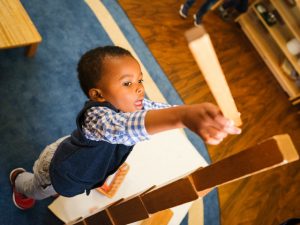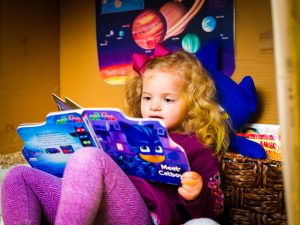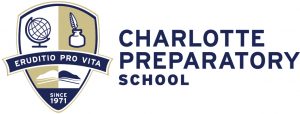By Sharon Vanella, Head of Early School, Charlotte Preparatory School
Montessori education allows children to create their learning paths, building on student interests to create a community of knowledge. This educational philosophy has been highly successful, creating some of the greatest thinkers of our time. Choosing the right Montessori school is not always easy. Because Montessori is a method and philosophy of education, rather than a step-by-step way of teaching, the schools that offer a Montessori approach will vary in quality and implementation. If you have decided that Montessori is the best learning approach for your child, then here are some tips to help you select the right program.
Ask About the School’s Vision
Is the school traditionally Montessori, or does the school allow for modifications in the curriculum and educational structure that are in line with changes in culture? Both are valid options, but you will need to decide which is best for your child, and you must know what the school’s vision is before choosing. At Charlotte Prep, we offer a Montessori Early School, starting with toddlers at age 2. We then offer the Montessori Primary cycle, which feeds into a traditional K-8 Lower School and Middle School. Our vision is to build lifelong learners by giving them the solid, concrete foundation that the Montessori Method provides. Additionally, the Grace and Courtesy component of Montessori helps children to develop the problem-solving, social, and leadership skills that they will carry forward throughout their education.
Look for a True Montessori Learning Environment
The Montessori learning environment has a unique look, and unfortunately, some schools claim to provide a Montessori structure when, in fact, they do not. How can you spot a true Montessori program? Look for:
– A warm environment that feels welcoming and safe 
– Montessori learning materials, art, and live plants
– No rows of desks, but rather a classroom filled with child-sized furniture grouped into curricular areas
– A practical or life-skills area
– Few toys
– Mixed-age groupings
– Child-sized toileting facilities
– Neat and orderly organization
– Materials prominently displayed and within reach of children
– A lack of workbooks and traditional school papers
Watch the Students
If the environment looks good, make sure you schedule a tour during a time when students are in the classroom. You should see students who are working together with others around the room and are acting safely and respectfully. You should also notice students actively engaged in learning, working with materials, and freely selecting the activities and work of their choice. If you observe a conflict arising, you will see students, sometimes with the aid of teachers, solving those conflicts peacefully and respectfully. Often there will be a Peace Table at which children may work out differences or a “watching chair” from which children or adults may observe peacefully.
Overall, the classroom should be buzzing with activity. Except during the morning circle time, the students are not going to be sitting quietly in the Montessori classroom. In every area of the classroom, students should be using all their senses to learn. Above all, the children should be happy and content, working hard while also enjoying their time in the classroom.
Observe the Teacher
In the Montessori school, the teacher’s role changes from standing in front of the classroom instructing to engaging with small groups of students, teaching how to use materials, or presenting lessons to smaller groups. Montessori teachers will also spend a significant amount of time observing their classroom, determining where students could use more encouragement, or what materials to introduce to students next.
The Montessori educator is a mentor and facilitator, not a director. He or she should always model peaceful and courteous communication, interacting respectfully with the children and adults in the classroom. The teacher should seem happy and at peace, enjoying the students and the task of guiding instruction. Teachers will most often sit or crouch to achieve eye-level contact with the child while communicating.
Select a school that has Montessori-trained teachers. A traditionally trained teacher who tries to adjust to the Montessori world will likely struggle to embrace the educational structure. If possible, find a school where the assistants are also Montessori trained.
As you can see, choosing the right Montessori school for your child requires a visit. An initial tour of general information, an observation of the classroom, and a visit between the child and teacher are all part of the enrollment process. By doing a little homework and spending the time getting to know the schools you are considering, you will be able to find one that perfectly meets your child’s needs and embraces the vision of Montessori education.
Upcoming Admissions Open House Events
Montessori Early School (Ages 2-5)
Thursday, October 11, 2018, at 9:30 a.m.
Pre-Kindergarten-8th Grade
Sunday, November 18, 2018, at 2:00 p.m.
Thursday, January 17, 2019, at 9:30 a.m.
For more information or to schedule a tour of campus, please contact Director of Enrollment Vicky Wilkison at vwilkison@charlotteprep.org or 704-366-5994.
Charlotte Preparatory School
212 Boyce Road
Charlotte, NC 28211
(704) 366-5994
Website
Facebook
Twitter: @CharlottePrep
Instagram: @Charlotte.Prep
Prep Talk, Charlotte Prep’s Blog



